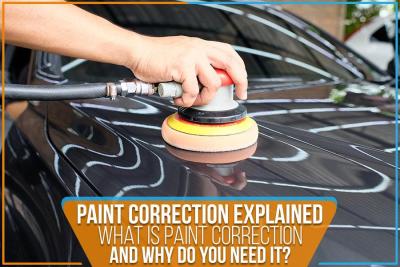Your Guide to Professional Paint Correction Techniques and Tips
-
Are you looking to make your car’s paint shine like new? Paint correction is a powerful way to achieve a flawless, mirror-like finish. This professional technique removes imperfections and enhances the depth and clarity of your car’s color. In this guide, we’ll cover what paint correction is, why it’s beneficial, and some expert tips on how to get the best results.
What is Paint Correction?
Effective paint correction methods is the process of removing surface imperfections like swirl marks, light scratches, oxidation, and water spots from a vehicle’s clear coat. Through polishing, compounding, and buffing, the process restores a smooth, even finish. The goal? A surface that’s as close to perfect as possible. While this task can be complex, understanding its steps and tools will help you appreciate the skill and precision involved.
Why Choose Paint Correction?
Paint correction not only enhances your vehicle’s appearance but also adds value and longevity to the paint. Here’s why it’s a popular choice:
-
Restores Shine: Professional paint correction brings out your car’s true color and shine, giving it that showroom-quality gloss.
-
Increases Resale Value: A well-maintained, scratch-free exterior makes a strong impression on potential buyers, increasing your car's resale value.
-
Protects the Paint: Removing oxidation and contaminants helps prevent further damage, keeping your car looking newer for longer.
-
Prepares for Protection: After correction, a ceramic coating or wax application can better adhere to the paint, providing lasting protection.
Levels of Paint Correction
Paint correction is typically categorized into three levels, depending on the extent of imperfections:
-
One-Step Correction: Removes minor defects like light swirl marks and slight haze, leaving a noticeable improvement.
-
Two-Step Correction: This involves a more aggressive compound to remove medium scratches and oxidation, followed by a finer polish.
-
Three-Step Correction: For cars with deep scratches and severe imperfections, this technique includes multiple rounds of compounding and polishing to achieve a mirror-like finish.
Top Techniques for Effective Paint Correction
Here are some key techniques for achieving a professional-grade paint correction:
-
Start with Clean Paint: Wash and decontaminate the car’s surface thoroughly to remove dirt, tar, and other contaminants. A clean surface ensures the correction process is effective and prevents additional scratches.
-
Clay Bar Treatment: A clay bar treatment removes bonded contaminants from the paint, creating a smooth surface for the correction process. Glide the clay bar across the paint with lubricant for the best results.
-
Use the Right Pads and Compounds: Different foam and microfiber pads work best for specific types of correction. Use a cutting compound with a heavier pad for deeper scratches and a polishing compound with a finer pad for lighter imperfections.
-
Mastering Machine Buffing: A dual-action polisher is the most recommended tool for paint correction. It minimizes the risk of burning the paint, which can happen with high-speed rotary buffers. Maintain even pressure and work in small sections to ensure uniform results.
-
Inspect Your Progress: After each pass, inspect the area with a detailing light to check for any remaining imperfections. This will help you assess if further correction is necessary or if you can proceed to the next stage.
Benefits of Professional Paint Correction
Choosing paint correction offers both aesthetic and practical advantages:
-
Enhanced Aesthetic Appeal: The deep gloss and clarity achieved through paint correction make your car’s finish look rich and vibrant.
-
Preventative Care: By removing surface defects, you’re helping to prevent deeper, more costly damage in the future.
-
Improved Coating Longevity: A corrected surface is ideal for ceramic coatings or wax applications, which adhere better and last longer.
Maintenance Tips for Paint-Corrected Vehicles
Once your car has been corrected, following these maintenance tips will help it stay in pristine condition:
-
Use Quality Car Wash Products: Opt for pH-balanced soaps and soft microfiber towels or mitts to reduce the risk of adding new scratches.
-
Apply a Protective Coating: Seal in your results with a ceramic coating or wax. These products protect the finish and add an extra layer of gloss.
-
Avoid Automatic Car Washes: Automatic brushes can create swirls and scratches. Hand washing with gentle products is best.
Choosing a Professional Paint Correction Specialist
If you’re in the market for professional paint correction , finding a reliable specialist is essential. Look for a technician with expertise in paint correction and the proper equipment to avoid damaging your vehicle. Skilled professionals can assess your car’s paint condition and recommend the right correction level.
Conclusion
Paint correction is an art that can make your car’s paint look as if it just rolled out of the factory. By removing imperfections and restoring shine, this process enhances the beauty and longevity of your vehicle’s finish. Whether you go for a single-step correction or a more intensive, multi-stage process, paint correction provides lasting, visible results. Ready to transform your car’s look? Consider professional paint correction techniques to achieve a flawless, glossy finish that turns heads.
-
